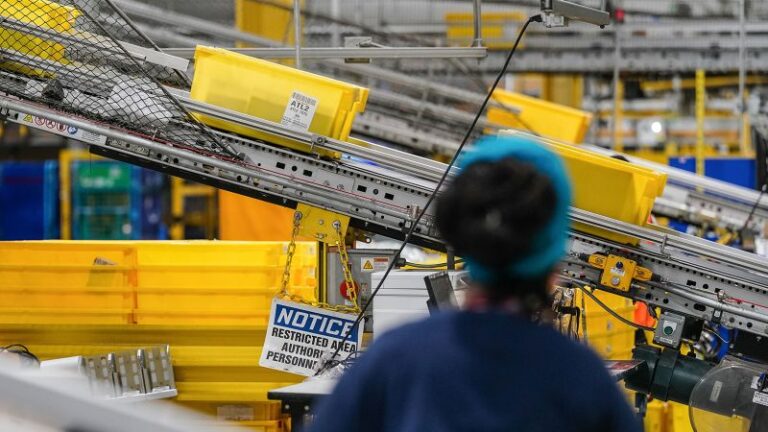US inflation cooled off at the wholesale level in August, bolstering hopes that high tariffs aren’t yet causing prices to spiral out of control, fresh data showed Wednesday.
However, economists caution, the better-than-expected reading could be a sign of a slowing economy and that shrinking businesses’ margins could foretell higher prices for consumers in the near future.
Producer prices unexpectedly fell 0.1% in August, cooling annual inflation to 2.6% from a downwardly revised 3.1% in July, according to Bureau of Labor Statistics data.
Helping to drive prices lower was a 1.7% drop in trade services, a category reflective of changes in retailers and wholesalers’ gross profit margins.
If margins are shrinking, it could be an indication that businesses are using those to eat higher costs — such as those from steep tariffs — and ultimately pass more of those costs to consumers or make cutbacks elsewhere, economists have said.
The trade services category can be highly volatile; however, August’s estimated drop is the biggest monthly decline in more than a year. (PPI data is revised the following month as more comprehensive information becomes available from businesses).
When excluding highly volatile components like trade services, as well as food and energy, the underlying inflation trend appears less rosy: Prices rose 0.3% from July and ticked up to 2.8% for the 12 months ended in August.
Still, Wednesday’s report painted a picture of inflation not drastically escalating at the wholesale level at a time when President Donald Trump’s tariffs have settled in more firmly. The softer wholesale inflation dynamic bolstered investors’ expectations that the Federal Reserve will follow through cutting interest rates later this month.
“The tariff effect is not boosting across-the-board price pressures yet,” Christopher Rupkey, chief economist at FwdBonds, wrote Wednesday in a note. “Economists will still caution markets that core producer goods prices are rising significantly at the producer level, so the country is not out of the woods from the inflation threat.”
“But the warnings are falling on deaf ears as far as investors are concerned. As time goes on, one has to wonder if there are slow-growth reasons and weak economic demand that is keeping inflation in check,” he added.
Stocks were mixed. The Dow fell 65 points, or 0.14%. The S&P 500 and Nasdaq each gained 0.4%. Treasury yields fell.
Economists were expecting that the overall PPI, which measures the change in prices received by producers of goods and services, would increase by 0.4% on a monthly basis and hold unchanged at the previously estimated 3.3% from a year ago, according to FactSet estimates.
Economists expected that a core measurement of PPI that excludes food and energy would slightly increase on an annual basis. Wednesday’s report showed that core PPI excluding food and energy (but still including trade services) fell 0.1% and slowed to 2.8%.
Wholesale consumer durable goods prices increased by 0.3% for the third consecutive month, a likely indication of tariff-related effects.
PPI serves as a potential bellwether for the prices consumers may see in the months ahead.
“Producer prices for goods continue to rise steadily in response to the tariffs,” Samuel Tombs, chief US economist at Pantheon Macroeconomics, wrote Wednesday. “Commodity prices, however, are flat, shipping costs have returned to their lowest levels since their post-pandemic surge, and the dollar has held its value against other currencies since June. So core goods PPI inflation should ease after producers have finished passing on tariff costs in a few months’ time.”
And for American consumers, prices have been rising faster than normal in recent months as more businesses have started to pass along the costs from steep import tariffs. Sharply rising goods prices have put upward pressure on overall inflation.
To what extent that trend continued in August will be much clearer on Thursday, when the BLS releases the latest Consumer Price Index data.
The most widely used inflation gauge is expected to show that prices rose 0.3% in August, a faster monthly pace than the 0.2% rate in July and that annual inflation would likely rise to 2.9%, its highest since January.
